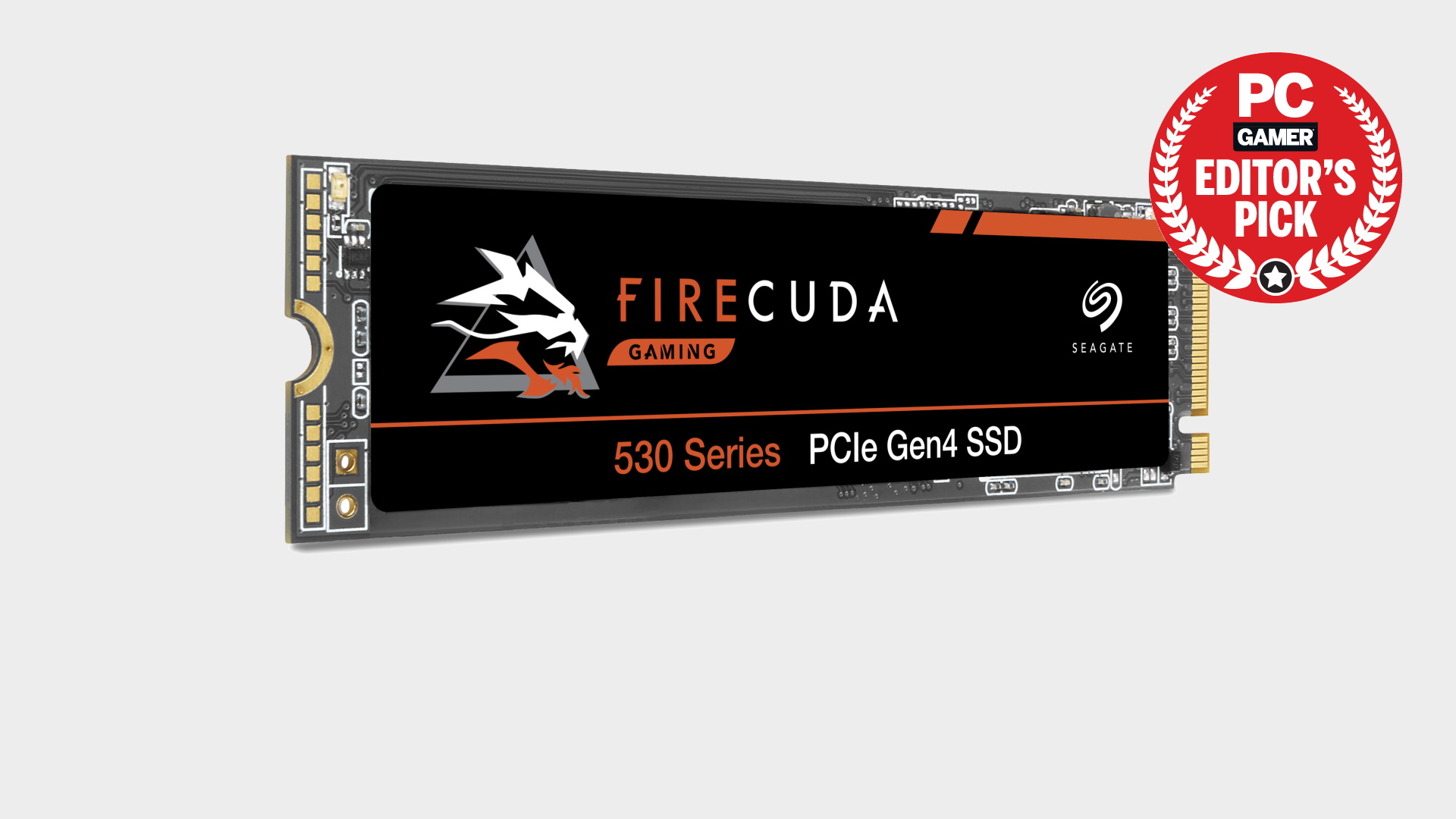Our Verdict
Seagate's 2TB FireCuda 530 combines awesome performance with best-in-class reliability to take the SSD crown. But beware, it comes at a steep price.
For
- All round great performance
- Excellent endurance ratings
Against
- Expensive
- Lacks AES 256-bit encryption
PC Gamer's got your back
If you're after a fast PCIe 4.0 SSD, most enthusiast gamers will tend to include Samsung and Western Digital drives on their shortlists. Seagate is still a big gun in the mechanical HDD market, but we have wondered in the past if Seagate may have missed a trick by not aggressively going after the SSD market like its HDD competitor WD did, particularly with its acquisitions.
Write off Seagate at your peril though.
We’ve been waiting in anticipation for the release of Seagate's FireCuda 530 series of PCIe 4.0 NVMe drives. And we can happily state that it's definitely time to add Seagate to the list of manufacturers capable of making top tier SSDs. If you don’t read all the way through to the conclusion, we don’t mind telling you that the Seagate FireCuda 530 is at least the equal of any SSD on the market.
Capacity: 2TB
Interface: PCIe 4.0 x4
Memory controller: Phison PS5018-E18 controller
Flash memory: Micron 176L TLC NAND
Rated performance: 7,300 MB/s sustained read, 6,900 MB/s sustained write
Endurance: 2,550 TBW
Warranty: Five years
The Seagate FireCuda 530 2TB is a 2280 (80mm length) M.2 drive. It combines brand-new Micron 176-Layer TLC NAND with a Phison PS5018-E18 controller. Micron claims that its 176L TLC NAND is the best in the industry with a 30% smaller die size and a 35% improvement in read and write latency over its previous generation 96L NAND.
The 2TB FireCuda 530's rated sequential read and write speed is 7300/6900 MB/s, and that’s pushing the limits of a PCIe 4.0 x4 interface. For users looking at the other capacities, the 4TB drive has the same rating while the smaller 1TB and 500GB drives are rated for 7300/6000 MB/s and 7000/3000 MB/s respectively.
There are also two basic FireCuda 530 versions. One comes with a heatsink, and the other does not. We have the heatsink-less version on hand.
Our sample had a rather crookedly attached sticker which didn't exactly impress in terms of the looks, but since its very likely to be hidden under a motherboard heatsink, it doesn’t really matter about the overall aesthetics.
The other version includes a solid and chunky metal heatsink developed in partnership with EKWB. It’s quite simple. Buy the standard one if you mount it under a motherboard heatsink, or grab the EKWB one if you don't. You will pay extra for the heatsink though, in fact there’s around a $50 difference between the two 2TB drives, and I think that's pretty steep.
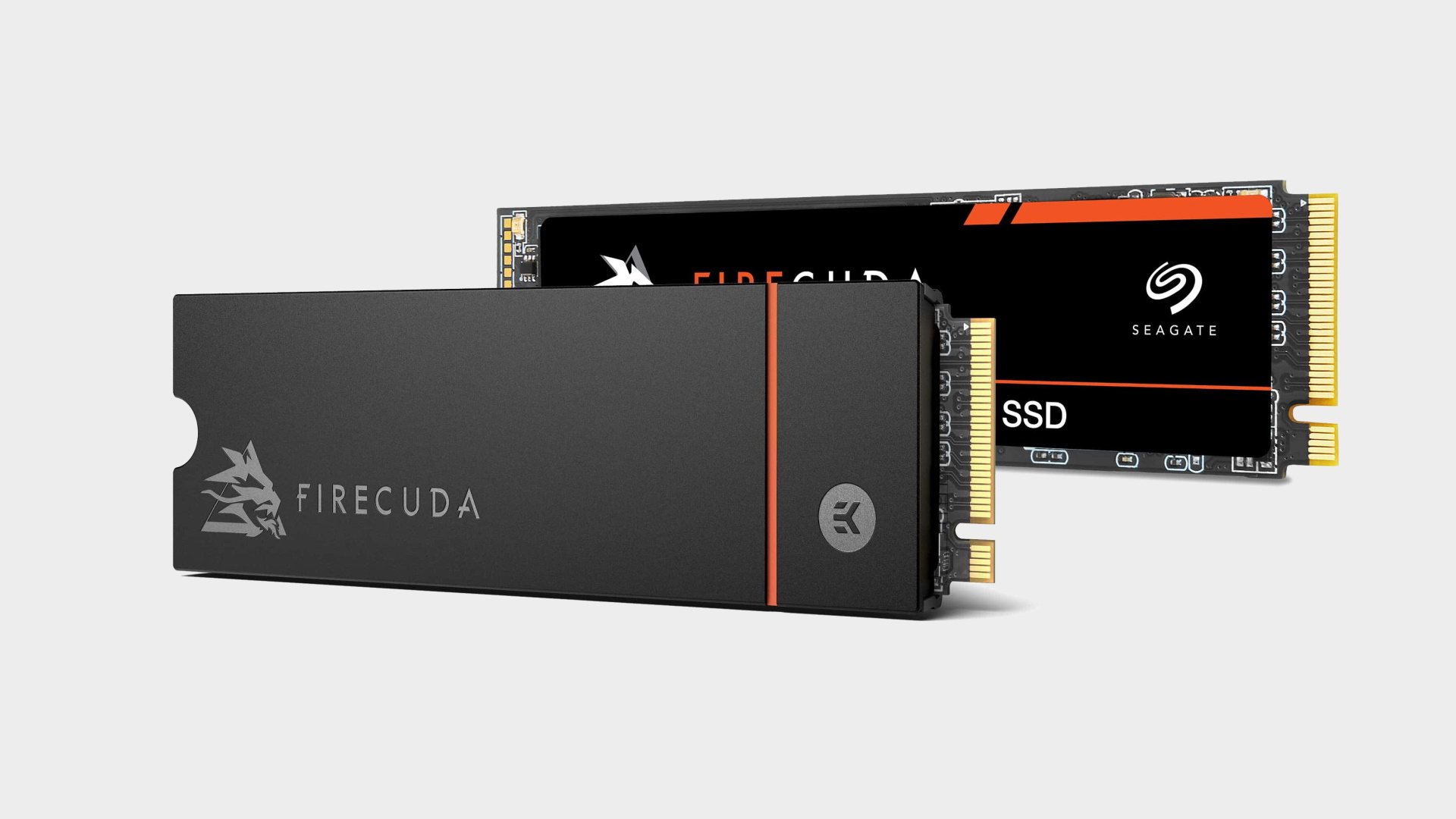
One of the key characteristics of the FireCuda 530 range, compared to other PCIe 4.0 and Phison E18 drives, is their rather stunning endurance ratings. The 2TB model comes with a massive 2550 TBW endurance rating, while the 4TB ups this to 5100 TBW. These ratings make the likes of the Samsung 980 Pro and WD_Black SN850 look like budget bin cheapies in comparison.
In conjunction with Seagate’s excellent data recovery plans, it would be easy for Seagate to repurpose the 530 as a workstation class product, especially now that Optane drives have been discontinued. Seagate's do lack AES256 encryption support though. Seagate would no doubt say that drive encryption is unneeded on a ‘gaming’ SSD.
Some Phison E18 equipped SSDs don’t come with any kind of management software, which can be a hindrance if you're hoping to clone your existing drive. Seagate includes a reskinned version of Acronis True Image which is easy to use. Seagate's SeaTools app also deserves a mention. It provides S.M.A.R.T. monitoring, health information, self-testing and erase functions among others.
Real-world performance
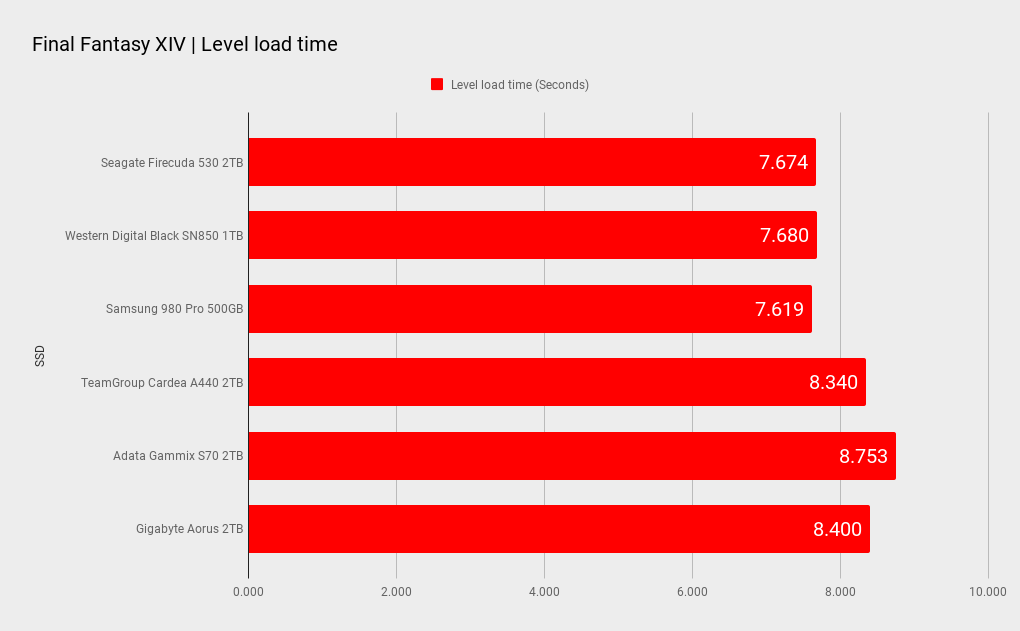
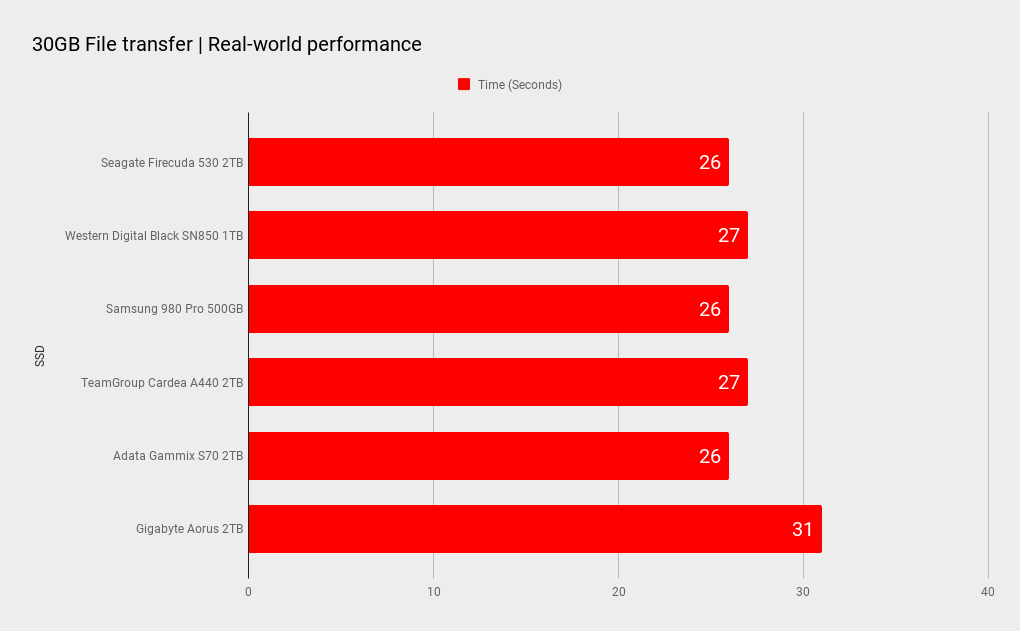
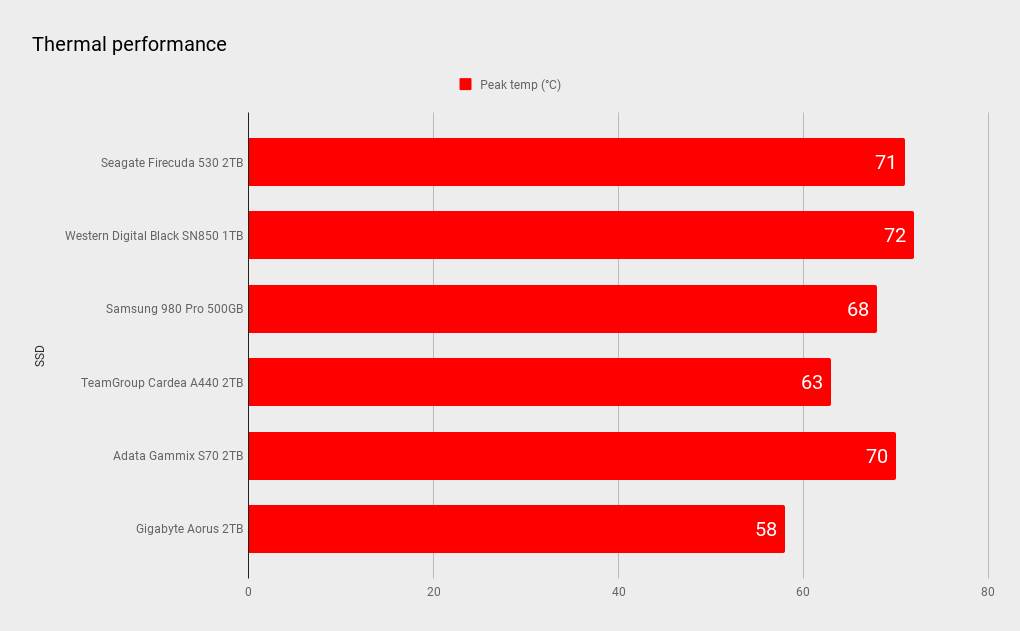
Synthetic storage performance

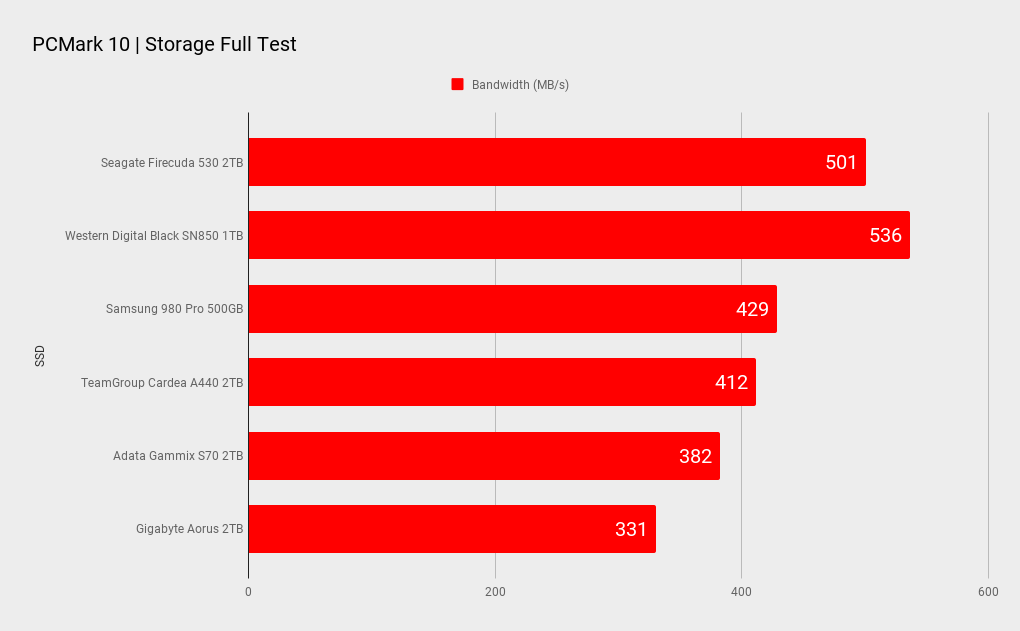
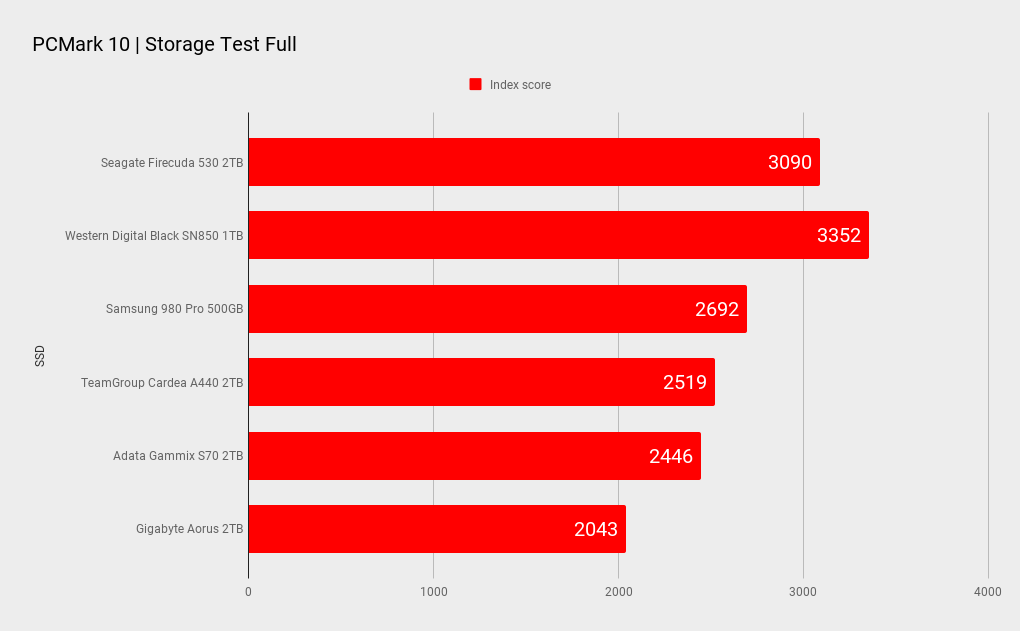
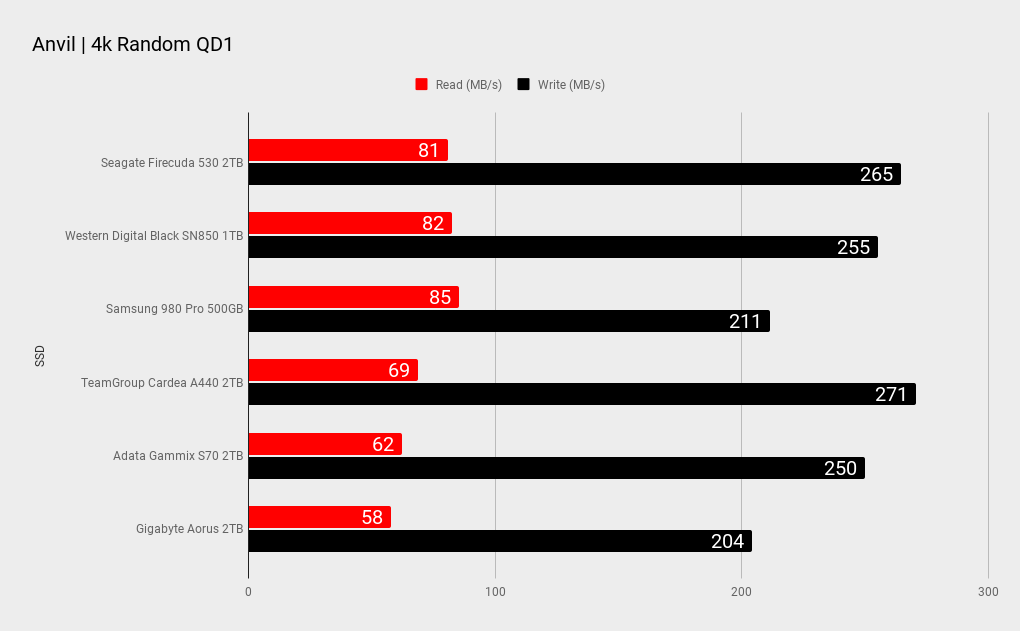
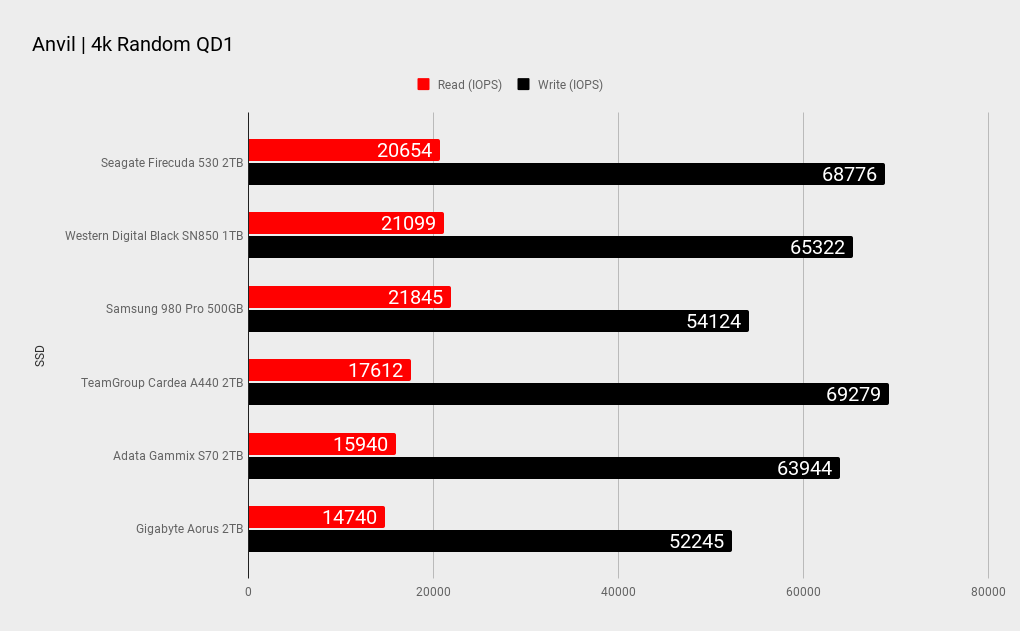
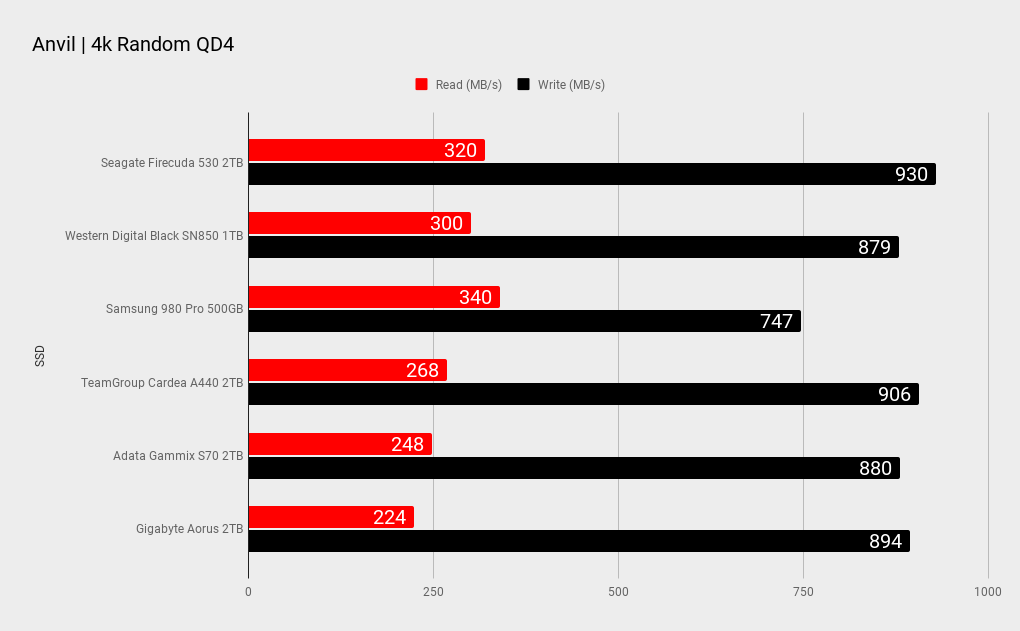

So, how does it perform? If Seagate hopes to sell a drive that costs more than the established SN850 and 980 Pro then it has to deliver, and it does. The latest Phison E18 drives typically excel at sequential read and write tasks, but tend to trail in random performance, and particularly random read tasks and IOPS, which is important for gaming performance.
Apart from the PCMark 10 storage tests, the FireCuda 530 either matches or beats the big bois of the storage world, and when you add its leading sequential performance and endurance rating, the Seagate 530 is at least the equal of any consumer SSD on the market.
We record temperatures throughout our testing making note of the peaks. The drive is left to run ‘naked’ with a Noctua fan over the area to keep things cool. The 2TB FireCuda 530 reached a peak of 71C, which makes it a pretty toasty drive, though we never saw any throttling during our extended testing. Though you will either want good airflow or an effective motherboard heatsink to keep things in check.
We’d like to compare both normal and EKWB adorned drives to each other, but would be surprised if there were more than a few degrees difference between the two though.
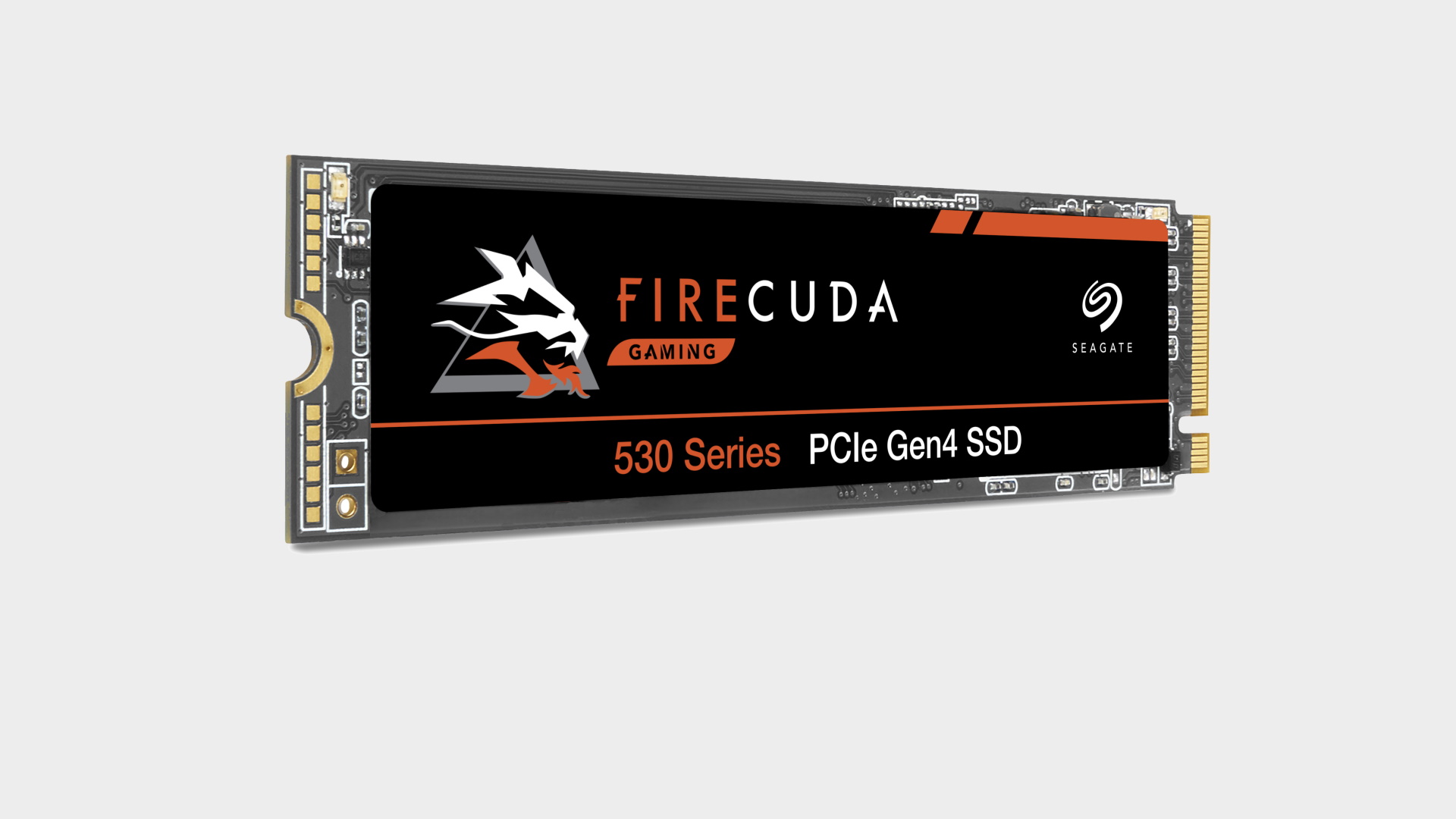
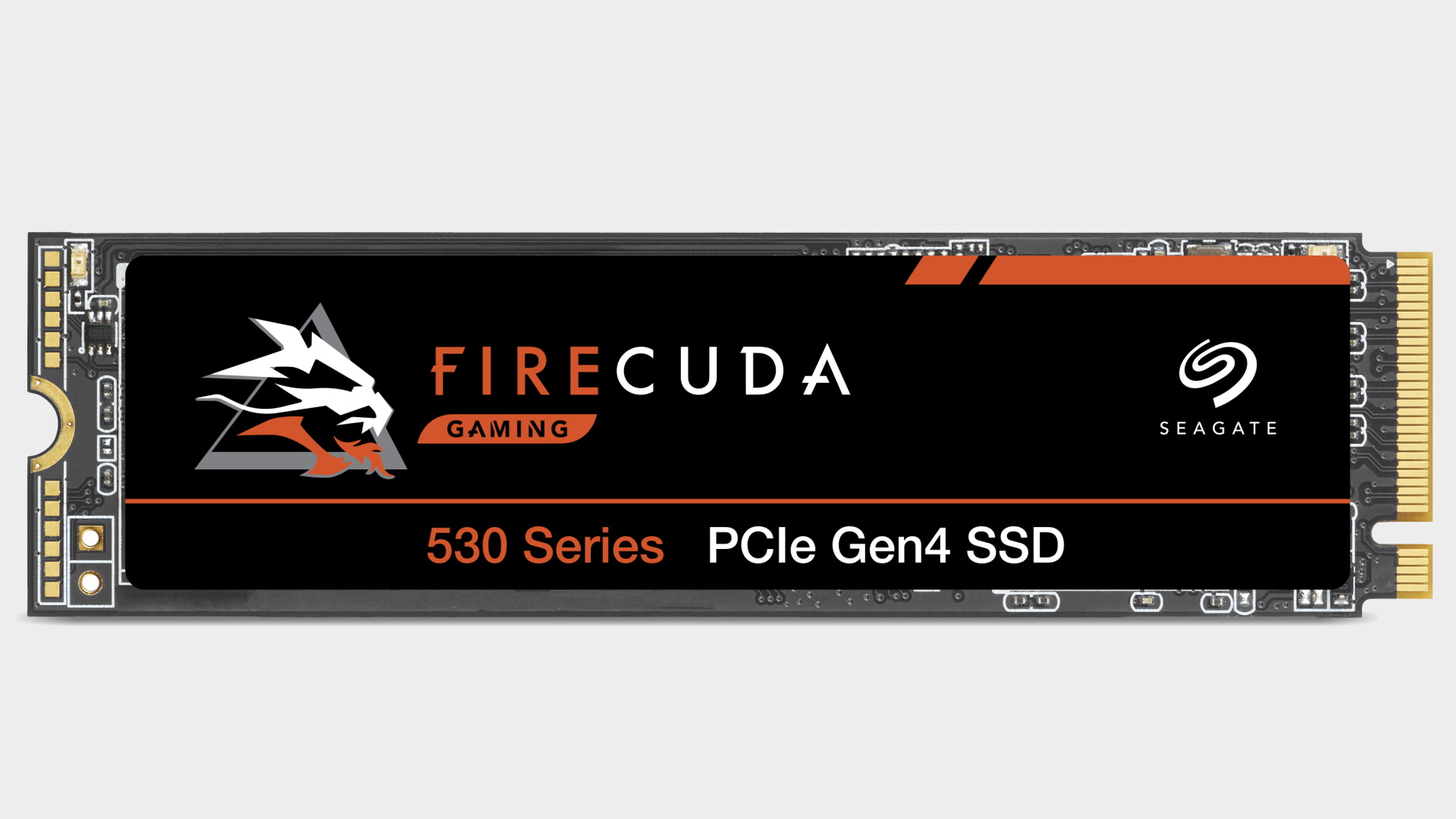

As a major player in the storage industry, I expect Seagate likely wrestled with the decision to hold back on releasing its best SSDs until it could include 176L NAND and steal the headlines. For me, the decision was absolutely worth it. Class leading sequential performance and a stunning endurance rating is joined by excellent random read and write performance.
All up this elevates the Seagate FireCuda 530 to the head of the pack. It will make a great C drive, it will hold a substantial game library or you could use it as a scratch disk for large data sets that need to be moved frequently. Feel free to thrash it with any kind of workload.
Seagate knows it has a strong competitor on its hands, and that means prices are steep. Probably too steep. There are strong competitors for less money, in fact the Seagate 530 2TB appears to be the most expensive of all consumer 2TB SSDs. When you combine stunning endurance ratings with awesome performance, then it's no surprise the FireCuda 530 comes at a premium. Pricing is always volatile though, especially in the current climate.
But Seagate has well and truly shaken up the top end of the SSD market. Samsung and WD now have some very serious competition. If you’re prepared to pay for the privilege, buying a Seagate FireCuda 530 will reward you with top tier performance and particularly reliability ratings that no competitor can match.
Seagate's 2TB FireCuda 530 combines awesome performance with best-in-class reliability to take the SSD crown. But beware, it comes at a steep price.

Chris' gaming experiences go back to the mid-nineties when he conned his parents into buying an 'educational PC' that was conveniently overpowered to play Doom and Tie Fighter. He developed a love of extreme overclocking that destroyed his savings despite the cheaper hardware on offer via his job at a PC store. To afford more LN2 he began moonlighting as a reviewer for VR-Zone before jumping the fence to work for MSI Australia. Since then, he's gone back to journalism, enthusiastically reviewing the latest and greatest components for PC & Tech Authority, PC Powerplay and currently Australian Personal Computer magazine and PC Gamer. Chris still puts far too many hours into Borderlands 3, always striving to become a more efficient killer.
